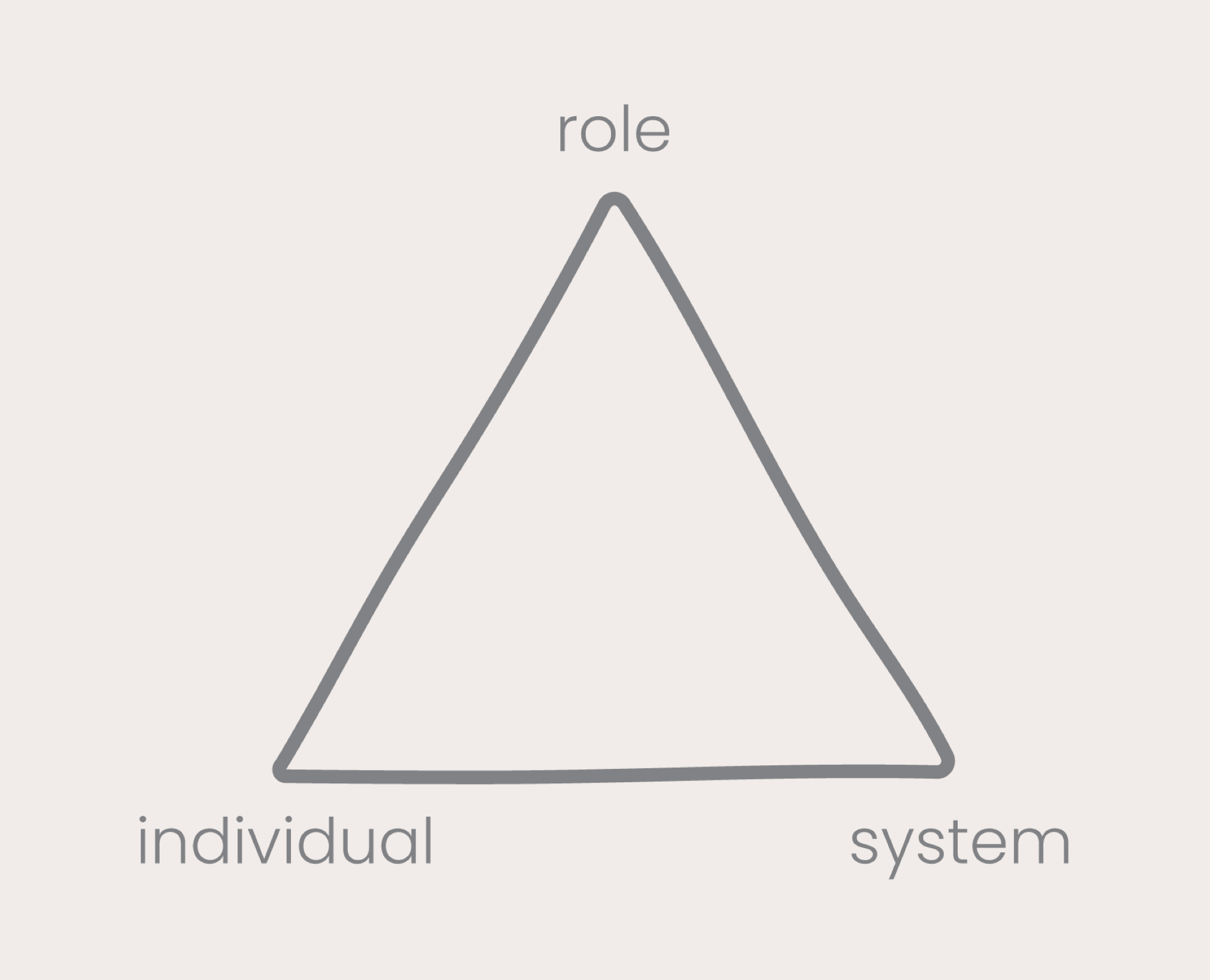

Orgonomics™ was founded in response to this challenge, by evolving frameworks and practices to help leaders develop and apply systemic thinking in the context of organisations.

The Role-In-System Framework (R-I-S)
The R-I-S Framework is at the core of the Orgonomics method. Based on Irving Borwick’s work, it has three components – the individual, the system and the role.
It is generally assumed that behaviour is defined by our character, personality and values (who we are). Yet behaviour is defined just as much by the context and systems we are in, and the roles we occupy in them. Behaviour emerges from the interactions between the parts. It is a property of the system not the individual alone.
Instead of trying to change the person, change can occur in the organisation with more speed and less turbulence by changing the system – the roles, role relations and patterns of interaction between the parts.
Orgonomics is based on these systemic assumptions, so your interventions look very different – and achieve very different results.
The 3R Pathway
Rewire | Reframe | Repattern™
Rewire
Traditional reductionist thinking and linear causal analysis is useful at times, but viewing the world through a mechanistic lens alone, you miss data which is right in front of you. Orgonomics Rewire opens up neural pathways to develop systemic intelligence. Looking through a systems lens, you can see complex interdependencies, circular patterns of relations and make different sense of how the whole connects.
Reframe
How we know and make sense of the world influences behaviour. Orgonomics Reframe helps you uncover the individual and collective assumptions, hypotheses and systemic mental maps that may have been previously hidden. By learning to be a ‘second-order’ observer of your own and others’ perspectives you’re freed to create new meaning and break out of self-limiting constraints.
Repattern
Every system evolves its own unique patterns of relating, with each part of the system taking up a role to co-create them. With Orgonomics Repatterning you discover and disrupt your stuck patterns of interaction between members and subsystems. Restructuring your network of roles and relations reduces ‘noise’ so you can function coherently ‘with minimum effort and maximum flow’.
If you’re able to rewire, reframe and repattern, you get a different result.
Result
The 3R Pathway releases trapped energy in your system with liberating commercial and cultural results. It provides a scaffold for you to go beyond the technical and ‘first-order change’ that is often applied to adaptive challenges and teaches you to make ‘second-order’ changes within your organisational system.
You develop a new shared language, frameworks and systemic practices, building agility and adaptive capacity into your DNA.
